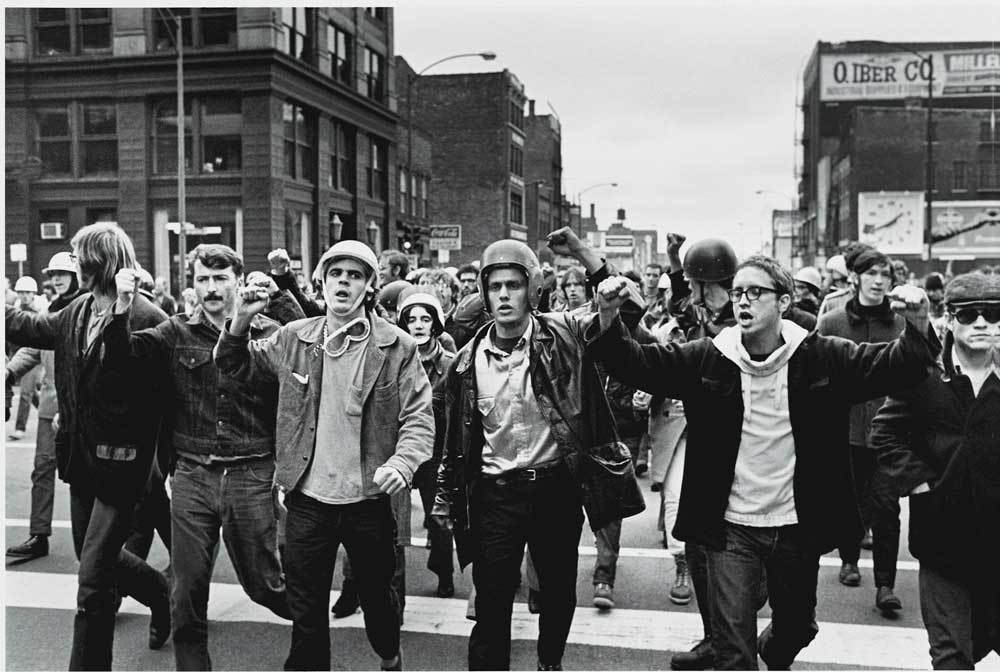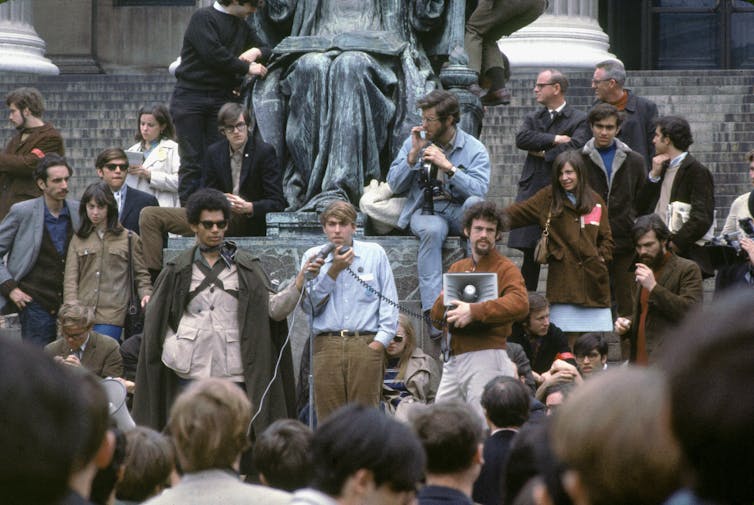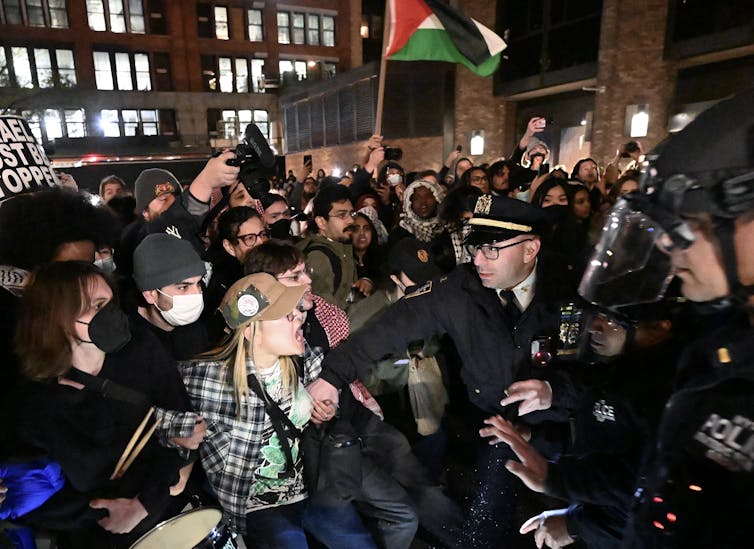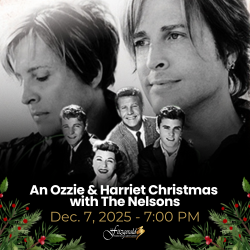
By Javed Ali
Following a wave of pro-Palestinian protests led by students at universities across the country, a few schools, like Brown University, say they are considering divesting from companies that support or work in Israel.
In most circumstances, with summer on the horizon, the friction between protesting students and university administrations appears to have diminished, at least for the time being.
The dramatic scenes of police and state troopers dismantling student encampments on campuses and arresting protesters have sparked some accusations of heavy-handed law enforcement tactics. At the same time, some law enforcement agencies have said that extremist agitators who are not actually students contributed to the clashes on university campuses in April and May 2024. At least in the case of the Columbia University protests, about 29% of the people that New York police arrested were not affiliated with the school.
I am a former senior U.S. government counterterrorism official and scholar of national security and terrorism. The wave of recent pro-Palestinian, student-led protests reminds me of another tense era in the U.S. that was also prompted by U.S. engagement in a foreign war – the Vietnam War in the late 1960s and early 1970s.
Students’ anger over the long-running U.S. war in Vietnam reached a boiling point on Aug. 28, 1968, at the Democratic National Convention in Chicago. That’s when police and protesters violently clashed on the streets in what is known as “The Battle of Michigan Avenue.”

Hulton Archive/Getty Images
Student anger mounts over Vietnam war
The U.S. accelerated its support of the South Vietnamese government against communist North Vietnam fighters in the mid-1960s, shifting from military training to carrying out overt and direct U.S. combat operations. This happened after August 1964, when North Vietnamese torpedo boats attacked U.S. destroyers in what is called the Gulf of Tonkin incident.
By spring 1965, the U.S. military was engaged in ground, air and naval operations against North Vietnam and their supporting Viet Cong insurgent fighters.
Anti-war protests in the U.S. also began around this time. A socialist group called Students for a Democratic Society, which opposed U.S. imperialism, played an active role within this anti-war movement that grew as U.S. military operations in Vietnam continued in 1966-68.
Meanwhile, President Lyndon Johnson announced in March 1968 he would not seek reelection and was halting U.S. bombing operations in Vietnam. This opened the door for Vice President Hubert Humphrey to run against Republican challenger Richard Nixon that summer.
Various student groups and anti-war organizations, including members of Students for a Democratic Society, protested Humphrey outside the Democratic National Convention’s meeting in Chicago in late August 1968. They were angry that Humphrey did not strongly denounce U.S. involvement in Vietnam. Some protesters held signs that said, for example, “Imperialism Saigon Prague” and “Cease Fire Now.”
The protests turned violent late on the evening of Aug. 28, 1968. Chicago police, Illinois National Guardsmen and other law enforcement personnel beat protesters with batons and dragged and handcuffed them as they arrested about 600 people. According to one former Chicago Police Department officer involved in the events that night, multiple warnings were given for protesters to clear an area between Grant Park and the convention center hotel. When those instructions were not followed, according to this officer, the police began aggressively clearing out those who were still present.
Roughly 100 protesters and law enforcement officers were injured in the clashes. Observers also got caught up in the fighting. Police physically forced out CBS correspondent Dan Rather, for example, from the convention building while filming a live news segment.
‘Days of Rage’
After August 1968, anti-war groups felt increasingly disillusioned about the prospects for peace in Vietnam – as well as what they perceived as the U.S. government’s unchecked power to suppress free speech and protest activity.
By early 1969, a new group called the Weathermen emerged from Students for a Democratic Society. The Weathermen had a more aggressive and revolutionary worldview than many members of Students for a Democratic Society. The Weathermen believed that direct confrontation with the state was the only way to achieve their objectives of forcing the U.S. to end the war in Vietnam and starting a revolution in the U.S.
The Weathermen organized a three-day protest called “The Days of Rage” in downtown Chicago in October 1969 – in recognition of the bloody clashes a little more than a year earlier at the Chicago Democratic National Convention. Hundreds of Weathermen came prepared for physical fights, with chains, baseball bats and slingshots. The protesters fought sporadically with law enforcement and the Illinois National Guard over the next three days in various sections of downtown Chicago, destroying property and leading to the arrests of dozens of Weathermen.
‘A declaration of a state of war’
By May 1970, the U.S. remained engaged in the Vietnam War, further fueling the Weathermen’s anger over the conflict and other perceived examples of what they called “capitalist imperialism” abroad and domestic inequality at home. The Weathermen rebranded themselves the Weather Underground and issued “a declaration of a state of war” against the U.S. government. The core group of Weathermen who were most focused on violent action probably numbered only in the several dozens. There was a larger group of members around the country who believed in the organization’s ideals but not the most extreme practices.
This was the start of the Weather Underground’s nearly decadelong campaign of domestic terrorist violence, including 25 bombings of government buildings and other perceived symbols of U.S. imperialism and injustice. They bombed the U.S. Capitol in 1971, the Pentagon in 1972 and the State Department in 1975, in addition to attempted bank robberies.
During this terrorism campaign, the Weather Underground’s bombings injured several people and caused physical damage to various locations. During a 1981 bank robbery in Nanuet, New York, three law enforcement officers were killed during a shootout with Weather Underground members. During this time, the FBI worked closely with various state and law enforcement agencies to investigate the group and criminally prosecute various members.
As a result, by the mid-1980s, many of the Weather Underground’s founding members were arrested or serving time in jail – essentially putting an end to their terrorist actions.

Fatih Aktas/Anadolu via Getty Images
Prospects for domestic extremism now
This summer, the Democratic National Convention will again be in Chicago. The parallels with previous events in Chicago, such as the Battle of Michigan Avenue in 1968 and the Days of Rage in 1969, are intriguing to consider – especially given the strong divisions in the country now over the Israel-Hamas war. There are also, of course, major differences, including the fact that students in the U.S. do not have a legitimate fear of being drafted – and there are not U.S. troops on the ground in Gaza.
The pro-Palestinian student protests at universities this year have been mostly peaceful and have not resembled anything at the scale or intensity of physical confrontation with law enforcement seen in Chicago in the late 1960s.
This is not to say that anger and despair over U.S. policy on Israel will dissipate any time soon, even if the physical signs of encampments and protests on university campuses are disappearing.
Terrorism scholars and experts like myself have spent decades trying to determine the precise set of variables and factors that drive individuals down the path of violent action in the name of political and ideological causes. The current environment in the U.S. over the war between Israel and Hamas has not yet mobilized people down that path. But as protesters said in 1968, “the whole world will be watching.”
![]()
Javed Ali is Associate Professor of Practice of Public Policy at the University of Michigan.






























I Just Love Flagler Beach says
Interesting that this article almost completely ignores the fact that the protestors of the 1960’s had a very personal vested interest in the war. They could be drafted and forced to fight. The fact that a small number of protestors, most notably the Weather Underground, became violent is not really shocking. There seems to always be a group of people waiting for an opportunity to be violent. The Militia, Oath Keepers, Proud Boys, White Supremacists, etc. I just find it a little disconcerting that the only inference that there is a difference between the 1960’s protests and the current protests is one sentence buried in the article.
“There are also, of course, major differences, including the fact that students in the U.S. do not have a legitimate fear of being drafted – and there are not U.S. troops on the ground in Gaza.”
Of course, analyze these current protests, but don’t pretend that they are similar to the 60’s. They are not. There are totally different motivations going on.
Ray W. says
I do not write this to disagree with you, I Just Love Flagler Beach. I write to address the use of the term “Anger” in the headline to the article. I write to express my belief that the end result of the disaffected among us all, both on the FlaglerLive site and all around the world, can be expressed in ways perhaps unique to each person.
In the German language, the term “weltanschauung”, derived from each person’s unique life experiences, means that each person holds a worldview like that of no other.
For example, when Netanyahu was concluding his Wye River agreement with Palestinian leaders, Ariel Sharon, Israel’s Defense Minister spoke on behalf of all Jewish settlers on November 16, 1998:
“Everyone that’s there should move, should run, should grab more hills, expand the territory. Everything that’s grabbed will be in our hands. Everything we don’t grab will be in their hands.”
Thus the Hilltop Youth movement was born. One of its founding fathers was Meir Ettinger, the grandson of Meir Kahane, the firebrand rabbi who favored mistreatment of Palestinians who stood in the way of a greater Israel.
Hilltop Youth seek a total destruction of the Zionist state of Israel. All Zionist institutions are to be torn down and an ultraconservative form of Jewish rule is to be established. A Jewish king is to be anointed; synagogues are to be built upon the ruins of leveled mosques. All Jews are to be subjects to the new non-Zionist form of Jewish rule.
Ehud Olmert once stated that Hilltop Youth “genuinely, deeply, emotionally believe that this is the right thing to do for Israel. This is salvation. This is the guarantee for Israel’s future.”
Just as the author points out that the Weather Underground split from the SDS because it sought a more violent approach to the expression of anger against hated American institutions, the Hilltop Youth spawned the Revolt, a more violent expression of anti-Zionist anger.
When Shin Bet investigators searched a Revolt safehouse, they found some of the Revolt’s founding documents. In one was written:
“The State of Israel has no right to exist, and therefore we are not bound by the rules of the game.” It was clear that there was to be no room for non-Jews in the Jewish state that is to rise from the ashes of the Zionist State of Israel:
“If those non-Jews don’t leave, it will be permissible to kill them, without distinguishing between women, men and children.”
To the members of the Revolt, there is no rule of law; it is a rule of self. Anyone can justify anything, so long as it is pure.
The first Revolt attacks on Palestinians began in 2014. Mosques, monasteries and churches were firebombed. Granaries burned and livestock slaughtered. Palestinians injured and groves uprooted. As commonly happens among the disaffected, the violence soon transformed to murder.
On a West Bank hilltop, Rabbi Mordechai Eliyahu issued a rabbinical ruling (Hebrew Law):
The ground on which the trees are planted is the inheritance of the Jewish people, and the fruit of the plantings was seeded by the goyim in land that is not theirs.”
This is the worldview, the weltanschauung, of the most disaffected of the members of the religious extremist Jewish settler movement. Some settlers are content to live a life that doesn’t involve violence and property damage against non-Jews. But the most rabid extremists in their midst view malice and vengeance as theirs to wield with impunity.
This is the world of ASF, who so cavalierly calls for the death of innocent Palestinians, because they “deserve” death in her mind.
DaleL says
How quickly it is forgotten that this “war” is the result of a brutal, genocidal attack by Hamas on October 7, 2023. Hamas murdered thousands of innocent civilians and took another 250 prisoner. Those captives have been tortured and abused. Hamas could end this confrontation immediately by releasing the captives. Instead Hamas hides amongst Palestinian civilians which increases civilian deaths.
The campus “pro-Palestinian” protests are really more pro-Hamas. There is an exhibit in remembrance of those who were killed at the Nova Music Festival in NYC. The exhibit will run from June 11 to June 22. The protestors to the event reportedly wave Hezbollah, Hamas flags and carry banners reading, Long live October 7.
I do not see these protests even reaching the level of the 2020 BLM protests. The Israeli government is under immense pressure to free the remaining captives by any means possible. As long as Hamas has captives, there will be no peace.
Endless Dark Money says
protesting has been banned by the gop so they will just go to jail for unlawful gathering if they protest. I mean who doesnt support using American bombs to kill innocent children seems like both major parties do.
I wonder if those terrorism scholars think trump is a domestic terrorist cause he fits the definition quite well.